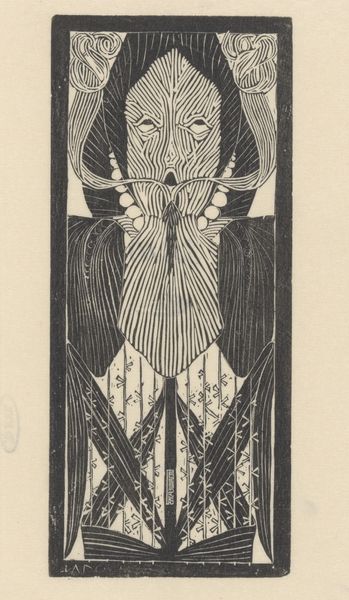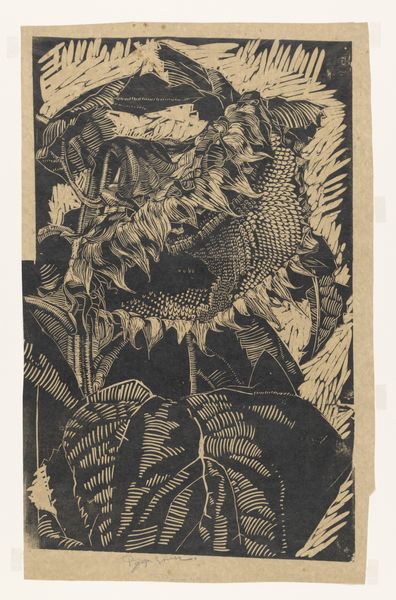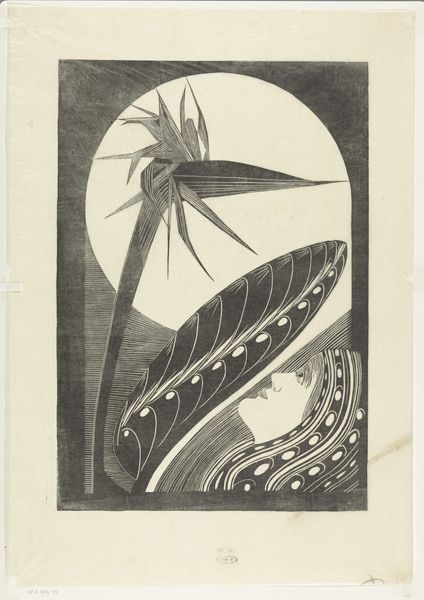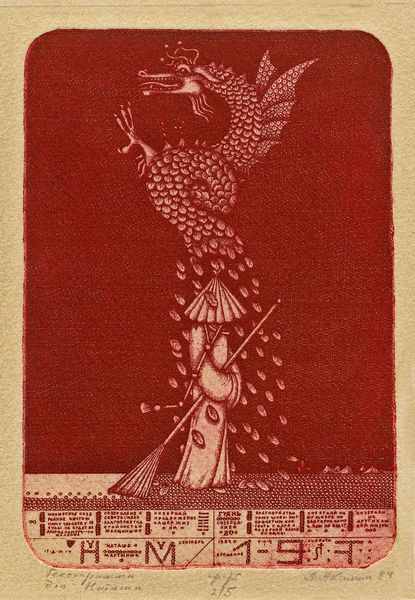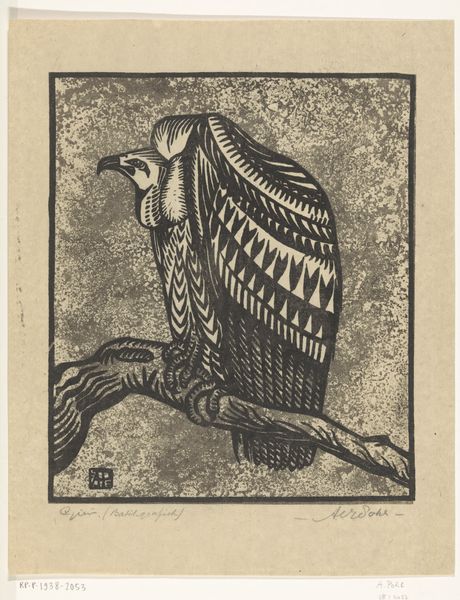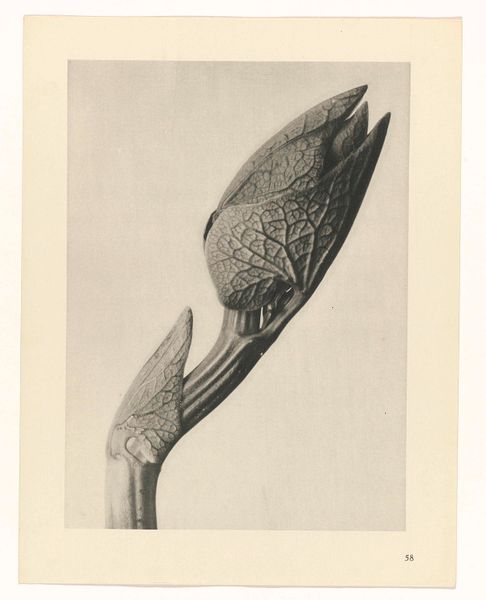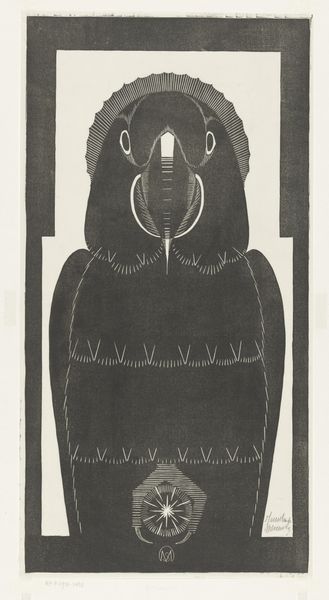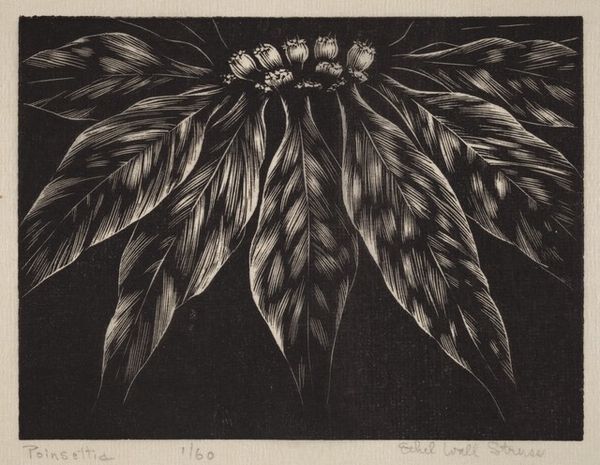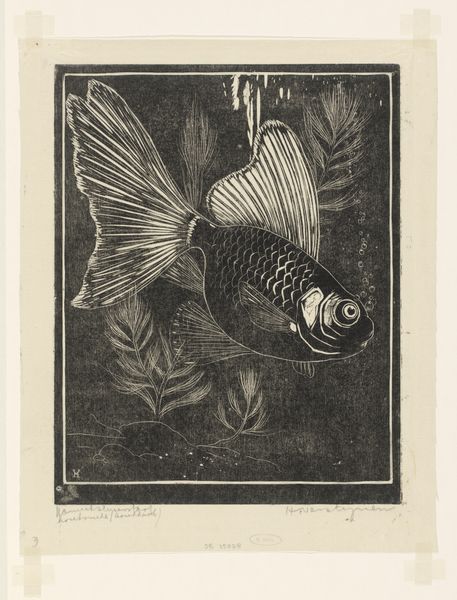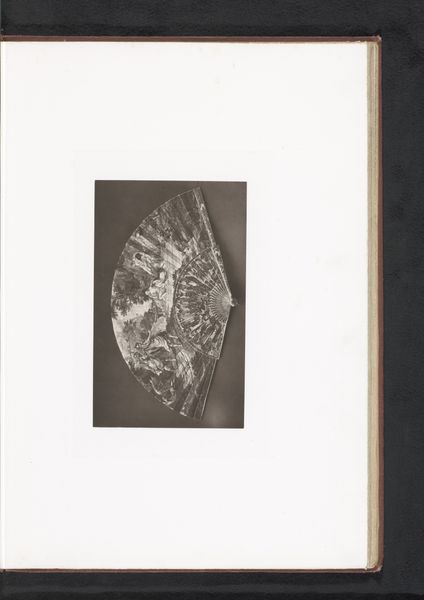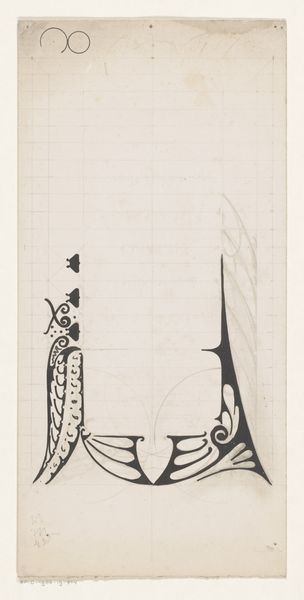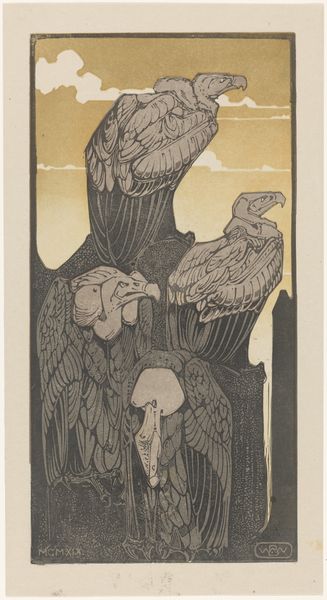
graphic-art, print, woodcut
#
art-deco
#
graphic-art
# print
#
old engraving style
#
woodcut
#
abstraction
Dimensions: height 670 mm, width 345 mm
Copyright: Rijks Museum: Open Domain
Curator: I am struck by the immediate starkness and graphic clarity of Samuel Jessurun de Mesquita’s woodcut print, "Ananas" from 1928. The interplay of black and white is so dynamic. What's your initial take on it? Editor: The high contrast certainly catches the eye, creating a bold yet somewhat unsettling mood. The sharp angles and rigid forms seem to depart from the organic subject matter of the pineapple itself, replacing it with geometric order. Curator: I think we need to view it within the context of its time. De Mesquita, a Sephardic Jewish artist working in the Netherlands, created this during a period marked by increasing social and political turbulence in Europe. Pineapples themselves carry a complex history, initially symbols of royalty and later tied to colonialism and the transatlantic slave trade. It raises questions about power structures. Editor: Intriguing. My first impulse is more toward pure visual analysis. Notice how the artist uses varied line widths to create depth and texture. The pineapple’s scales are rendered as tiny abstract fans, creating visual rhythm, and its spiky leaves almost seem to vibrate. It is very sophisticated in its abstract interpretation. Curator: Absolutely. This tension between abstraction and representation is one of the print’s strengths. While de Mesquita reduces the pineapple to its basic shapes, he also captures its inherent exoticism. Was he referencing his family's roots by deliberately evoking colonial trade and exploitation? Or, as a Jewish artist in a rising tide of antisemitism, was he more generally expressing precarity in this abstraction? Editor: Perhaps the sharp edges, in contrast to the softness we anticipate in fruit, express it best? To me it is more an exercise in pure form and composition. He masterfully plays with positive and negative space. The solid black geometric shapes that encase the pineapple create a frame that simultaneously traps and elevates the subject. Curator: A provocative thought. Either way, de Mesquita’s "Ananas" prompts questions about societal status, identity, and representation while maintaining a powerful presence. Editor: Indeed. De Mesquita gives us a rich study in contrasts on a visual and tactile level, offering a remarkable lesson in pure structure.
Comments
No comments
Be the first to comment and join the conversation on the ultimate creative platform.
